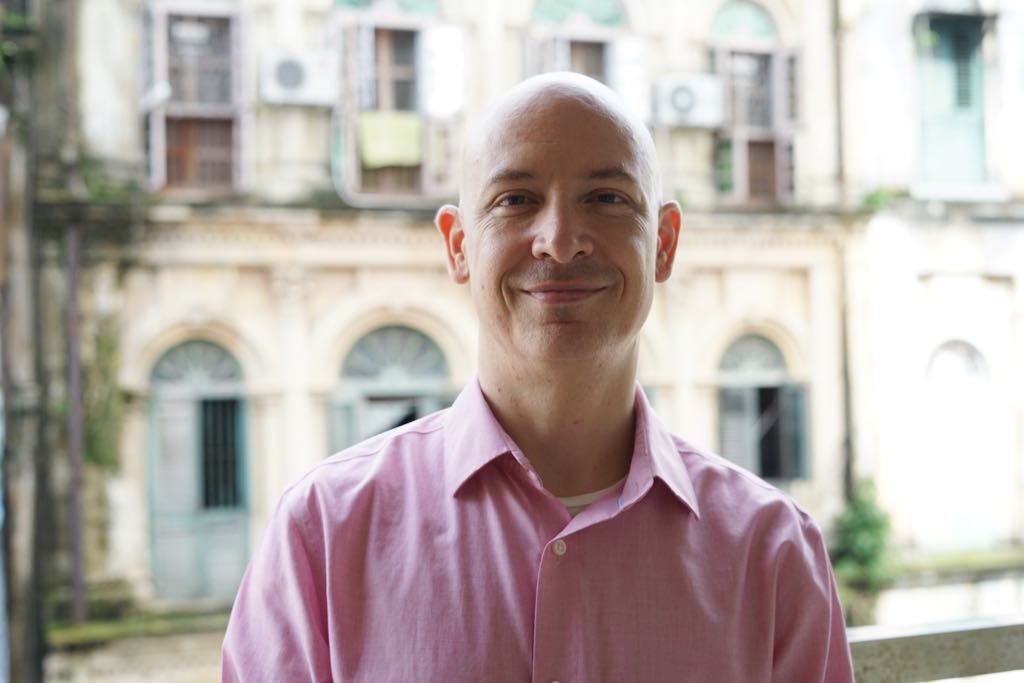This blog post is written by Gaston Bacquet, a first-year doctoral student at the University of Reading’s Institute of Education. Here, he reflects on his ongoing research on the link between language and culture, as well as the implications for teachers dealing with these issues in multi-cultural classrooms. Gaston’s research interests include learner identity, motivation and autonomy in language learning, multiculturalism and inclusive education. His PhD research will attempt to investigate how language can be used for further social inclusion.
Language and culture in the 21st-century classroom
Why is it important to understand the notion of culture in language learning? This is an issue that has concerned social researchers for the past 20 years and one of the questions posed by Tyrone Howard in his 2018 paper titled ‘Capitalizing in Culture’. His research focused on multi-cultural classrooms in the United States, and it illustrates why this is something that should be, from this researcher’s perspective, at the forefront of the language teacher’s reflection and practice
What is culture?
There is a generally agreed upon definition of culture as a system or pattern that defines and establishes the boundaries and range of what is considered acceptable behavior and what the behavioral expectations are for a specific group, so that its members can socialize effectively (Galloway, 1992; Lado, 1964; Richmond, 1992). It is also a commonly agreed notion in the Sociocultural Theory that learning is a social process, and it would be hard to imagine, for example, an immigrant in a foreign country, who could socialize effectively without knowing the target language to some degree as well. It can be argued then that there is an intricate and intrinsic connection between the two. According to Damen (1987), Kramsch (1993) and Pourkalhor and Esfandiari (2017), cultural knowledge is socially acquired and the patterns, behaviors and shared elements of a culture are transmitted and applied through language, which in turn becomes a mean to communicate and transmit the culture itself.

And why this matters?
In a world where social mobility has become the norm, classrooms are becoming increasingly multi-cultural and diverse; this means learners bring with them their own language, communication skills and culturally rooted knowledge, or their cultural capital, as Yasso described it in her paper “Community Cultural Wealth” (2005). This diverse racial, ethnic and cultural diversity means that language teachers must be able to recognise how different learners will use this capital and act accordingly. Nieto (2005) points out that unless this happens, educators will not become effective promoters of diversity and social justice.

Much research has been done on the issue of multi-culturalism in the US, and a great deal of the information gathered can be used to generate further discussion, elicit reflection and invite teachers to make informed choices that foster and nurture each learner’s individual culture. Gay (2010), for instance, provides insight into the types of examples teachers give in a classroom when attempting to explain things; he illustrates it by describing an instance of a teacher praising the achievements of Asian-Americans while deploring the ‘underachievement’ of African-Americans. Howard (2018) tells of an African-American child who gets confused with his teacher’s instructions, uttered not as a directive but as a question to someone used to a much more direct use of the language. Here then we have two examples from a monolingual, multi-cultural classroom, and it is not difficult to see how this can be easily compounded in a multi-lingual classroom where both culture AND language are different from one learner to the next.
Another reason why the culture of the learners is such an important factor to consider in today’s world is the Eurocentric orientation of English-language teaching. Gay (2010) points out that language teaching has become more Eurocentric than ever before and that in light of the current linguistic and cultural make-up of classrooms, it has become imperative to move away from that and towards building greater, deeper cultural awareness that will prevent us from teaching, as an example, the Renaissance as a solely European, mostly male-driven world-changing phenomenon. Instead, she suggests, teachers should also be teaching ‘renaissances’ that other cultures have experienced.
Some researchers (Liddicoat, 2005; Liddicoat, Papademetre, Scarino, & Kohler, 2003; Svalberg, 2007) have claimed that one of the most effective ways of learning a language is to experience the culture of the target language. Schumman (1978), for instance, constructed the acculturation model in which the learner seeks the psychological integration with speakers of the target language. While this might be possible in a context such as study-abroad programs or relocation or migration into a foreign country, this model does not seem suitable in a language classroom, where students are learning in a different setting.
Conclusions
What can be concluded, however, is the intricate connection between language and culture and how they shape each other to allow the transmission of behavior patterns that can allow for effective socialization; that learning a language invariably involves becoming acquainted with the target culture, and that teachers must remain aware and respectful of both of these in individual learners since both are also intricately connected with the learners’ sense of identity.

References
Damen, L. (1987). Culture learning: The fifth dimension in the language classroom. Reading, MA: Addison-Wesley.
Gay, G. (2010.) Culturally responsive teaching: Theory, research, and practice. (2nd ed.) New York, NY: Teachers College Press.
Galloway, V. B. (1992). Towards the cultural reading of authentic texts. In H. Byrnes (Ed.), Languages for a multicultural world in transition (pp. 87-121). Reports of the Northeast conference on the teaching of foreign languages. Lincolnwood, IL: National Textbook Company.
Howard, T. C. (2018). Capitalizing on culture: Engaging young learners in diverse classrooms. Young Children, 73(2), 24-33.
Kramsch, C. (1993). Context and culture in language teaching. Oxford, UK: Oxford University Press.
Lado, R. (1964). Language teaching: A scientific approach. Chicago, IL: University of Chicago Press.
Liddicoat, A. (2007). Pedagogical practice for integrating the intercultural in language teaching and learning. Japanese Studies, 28(3), 277-290.
Liddicoat, A. J., Papademetre, L., Scarino, A., & Kohler, M. (2003). Report on intercultural language learning. Retrieved at http://pandora.nla.gov.au/pan/40833/20040402-0000/www.curriculum.edu.au/nalsas/pdf/intercultural.pdf
Pourkalhor, O. & Esfandiari, N. (2017). Culture in language learning: Background, issues and implications. International Journal of English Language & Translation Studies, 5(1), 23-32.
Richmond, A. (1992). Mass culture of Cyanobacteria. In Mann N.H. & Carr N.G. (Eds.), Photosynthetic Prokaryotes. Biotechnology Handbooks Vol. 6 (pp. 181-210). Boston, MA: Springer.
Schumann, J. H. (1978). The Pidgination Process: A model for second language acquisition. Rowley, MA: Newbury House.
Svalberg, A. (2007). Language awareness in language learning. Language Teaching, 40(4), 287-308.
Yosso, T. J. (2005). Whose culture has capital? A critical race theory discussion of community cultural wealth. Race Ethnicity and Education, 8(1), 69-91.

